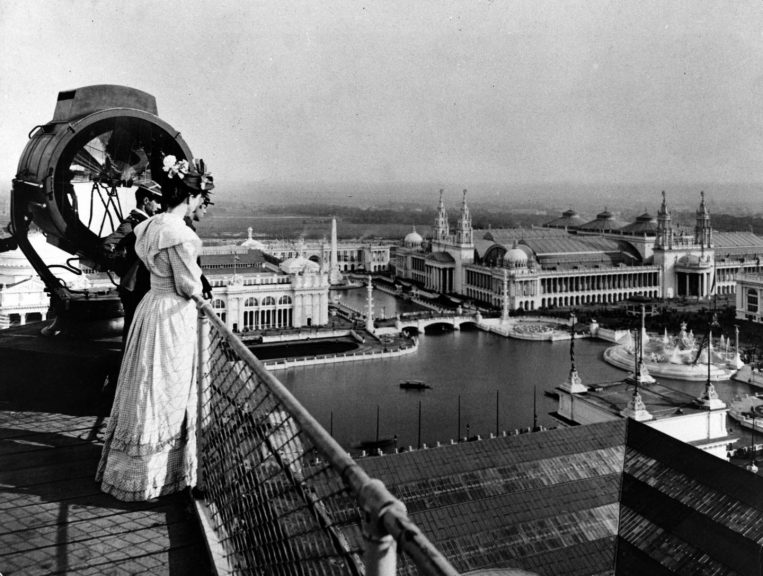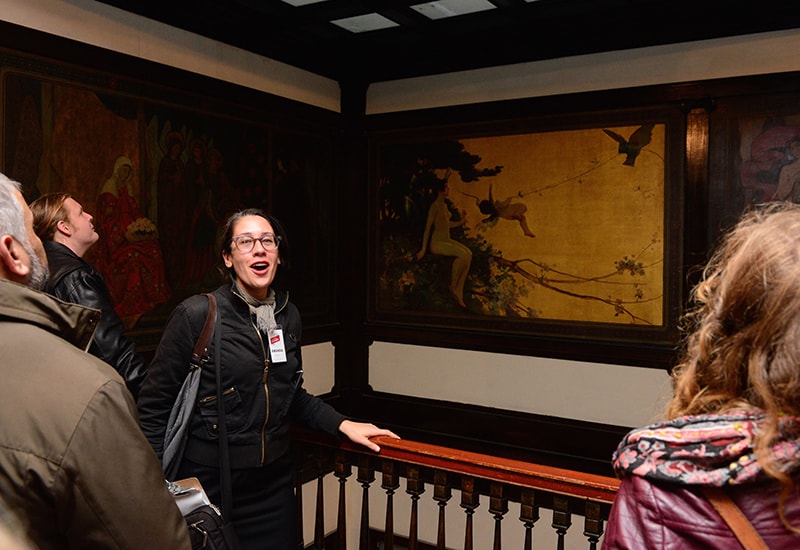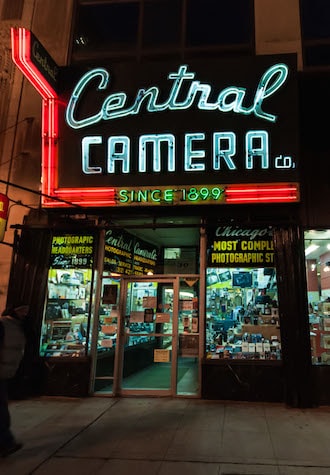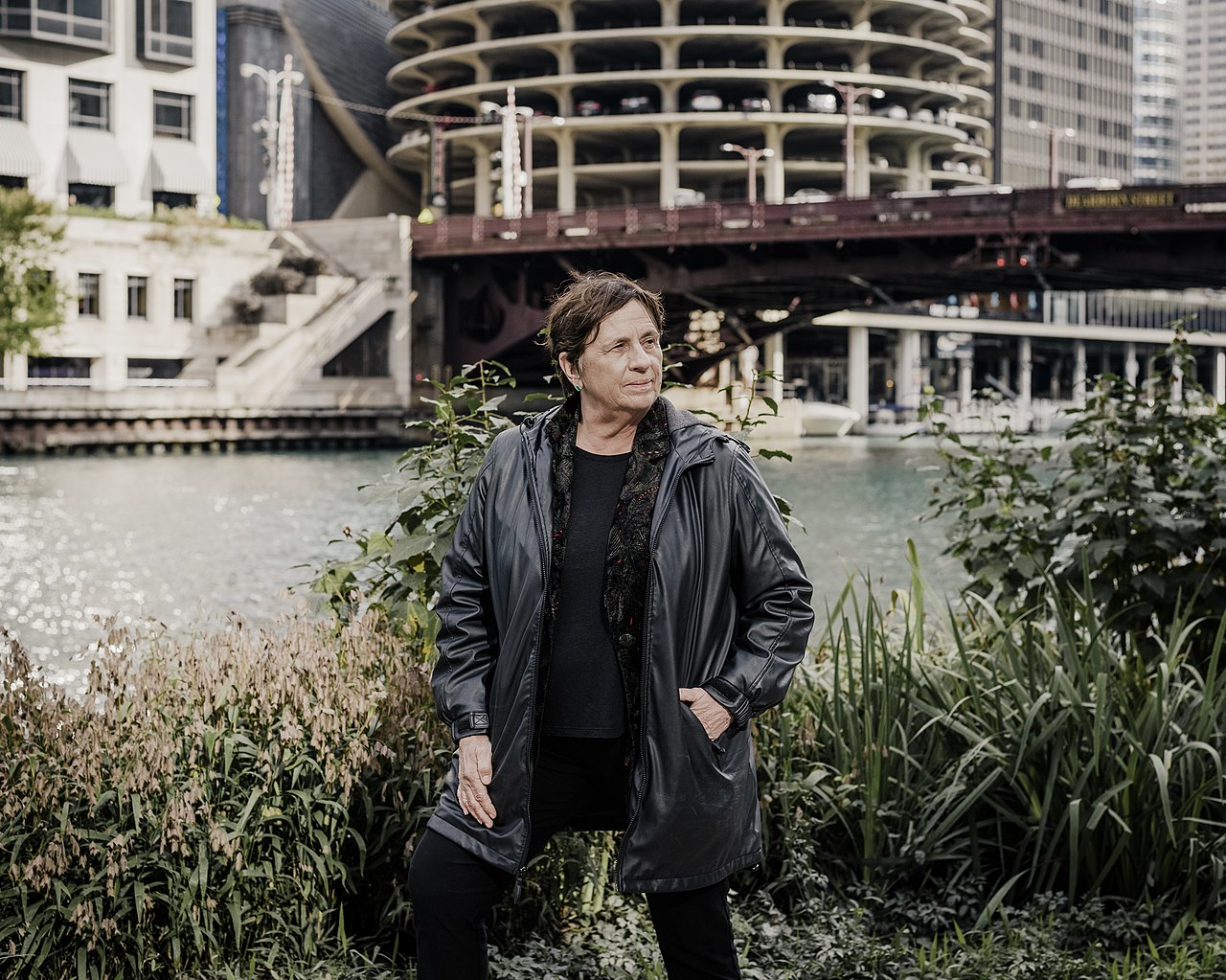In the 18 months since it launched, we’ve had tons of guests discover a huge piece of Chicago’s history on our “1893 World’s Fair Tour with Bars.” As anyone who has joined us knows, our guides always encourage questions from guests. Accordingly, we’ve been doing some fun research on the questions from our World’s Fair Tour guests. This seemed like an auspicious day to answer those questions, since the Columbian Exposition closed exactly 124 years ago today on October 30, 1893.

What’s the connection between Studebaker carriages and the car company?
To put it simply, they’re the same company!
This question pops up when we visit the Fine Arts Building. This fabulous time capsule of a building was constructed by the Studebaker Carriage Company in 1885. The Studebakers, based in South Bend, began as horse-drawn carriage manufacturers. They switched to car production in the first decades of the 20th century. The Fine Arts Building was their sales and service facility in Chicago. Incredibly, they even did some carriage manufacturing on the top floors. They sold the building for redevelopment as the Fine Arts Building in 1898. Unable to compete with Detroit’s Big Three, Studebaker went out of business in the mid-60’s.

When did C.D. Peacock leave the store with the peacock doors at the Palmer House?
This one took some digging!
We walk past the famous peacock doors at the Palmer House in the latter part of the World’s Fair Tour. To be perfectly honest, I hadn’t originally made the connection that the design of the famous peacock doors came from the name of the shop. But, sure enough, that’s the case. C.D. Peacock, which was originally named the House of Peacock, is one of Chicago’s oldest retailers. They date all the way back to 1837, which is the year Chicago was incorporated.
They occupied that sweet corner spot at State and Monroe for decades, but moved out when the chain went bankrupt in 1992. The company wasn’t liquidated, but never moved back to State Street. One presumes that the cost was too high. C.D. Peacock still has three locations, and they’re all out in the suburbs.

What was the name of the female architect that designed the Women’s Building?
The Women’s Building often strikes our guest’s interest. The fairgrounds were dotted with buildings dedicated to American states and foreign countries, amongst the grand structures dedicated to industry and innovation. The Women’s Building was proposed as a forum to show the artistic and social achievements of American women. The commission would be given to the best entry from a trained female architect.
Sophia Hayden was the winner at only 21 years old (way to make me feel like a failure at 30, Sophia). Here’s some fun background on the chaos of constructing the building: “During construction, Hayden’s design principles were compromised by incessant changes demanded by the construction committee, spearheaded by socialite Bertha Palmer, who eventually fired Hayden from the project. Hayden appeared at the Inaugural Celebration and had published accounts of support by her fellow architects.”
Central Camera’s sign says they’ve been open since 1899….what connection did photography have at the fair? How were photos even taken?

Souvenir photos for visitors were a huge cash cow for the organizers of the Columbian Exposition. They would have been on postcards or some kind of mass-produced paper. A lot of the familiar photos we know today began as souvenir images. The fair’s official photographer was William Henry Jackson. Famed for his photos of the American West, “(h)e treated the broad expanses of the lagoon, boulevards, and the midway much the same way he photographed the open environs of the American west. Most of the images were taken before the crowds arrived, and therefore, do not reflect the popularity of the exposition, which attracted over twenty-seven million visitors.”
Visitors would have been able to take their own photos as well. Kodak had revolutionized photography with its commercial, mobile camera in 1888. This device was still expensive, of course. A roll of film cost twice as much as a ticket to the fair itself! But much like we spend on smart phones today, it’s something many middle class families would’ve had.
What influence did the Union League Club have on the fair?
To start with, maybe the single most influential figure in the World Fair’s management was a member. Daniel Burnham, the head of construction for the Exposition, belonged to the Union League Club, among others.
The club claims to have been instrumental in getting the fair awarded to Chicago, but it’s hard to say how. The members were all extremely wealthy and prominent businessmen. So it’s very likely that they were amongst the lobbyists, cheerleaders, and fundraisers who convinced Congress to award the fair to Chicago.
How much did tickets cost?
A Tribune article says “Chicago Day” tickets cost 50 cents. In today’s money, that’s $12. The Federal Reserve Bank of St Louis says the average wage in 1891 was 12 cents an hour. So this would have been a big expense for a lot of households!
That’s all for now, though we have some other questions we’re researching for a future post about with questions from our 1893 World’s Fair tour guests.
– Alex Bean, Content Manager and Tour Guide

















